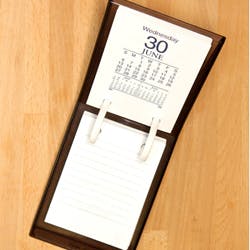It’s just six weeks to June 30, meaning it’s time to make sure you’ve dusted off your business plan and are thinking about how you can shine in FY2013. Here’s how you can prepare for the coming financial year in five steps.
With the new financial year just weeks away, it’s important to ensure that you are planning for the year to come. Your plan doesn’t have to be long and complex—in fact, the shorter and more actionable, the better. But it does have to set out your vision for your business and what you’d like to achieve over the next 12 months.
So here are five easy steps to help unlock the potential of your business and get the new financial year off to a great start.
Step 1: Do the vision thing
The first step is to review your current plan, assuming you have one. Not only to check that you’ve achieved your goals, but to ensure that it captures your evolving vision for your business.
That’s because a good plan is more than just a budget. It also defines the things that make your business different and keep your customers coming back, especially your unique selling proposition (USP).
You may find that your business model has changed or that your day-to-day operations have drifted away from your original USP. If so, now is the time to update your plan and set a clear vision for the future.
Step 2: Set goals
A plan isn’t a plan without some concrete goals. But make sure they’re specific, achievable and measurable, then assign clear responsibility to someone in your team for achieving each one. Create an action plan with milestones for each step, then regularly follow up to ensure you stay on track. Remember, what gets measured, gets managed, so have good tracking systems in place.
Tips
- Update your plan with specific, measurable goals for the year ahead.
- Measure everything about your business, from the number of leads each month to the profitability of each product you sell.
Step 3: Check your finances
Now you know your goals, you need to make sure you have resources in place to achieve them. And with the Australian economy still not firing on all cylinders, it also pays to have a cash reserve ready in case of emergencies. Start saving some of your excess cashflow, or talk to your bank about an overdraft or line of credit. Because the best time to talk to your bank is when your business is performing strongly, not when things are tight.
Tips
- Aim to keep between two and six months expenses in reserve.
- Put finance in place ahead of time, rather than waiting until conditions tighten.
Step 4: Keep cash flowing
With average payment terms for Australian businesses remaining high (according to Dun & Bradstreet), your business may already be feeling cashflow pressure. And even if you’re not, it’s always a good idea to make sure that your cashflow systems are running at maximum efficiency.
The first step is to create a cashflow forecast, then track incomings and outgoings scrupulously. Online banking tools can give you an up-to-the-minute snapshot of your cash position at any time of the day or night. And your business banker can also help you make sure you’re using the best payment and cash management tools for your business.
Tips
- Create a cashflow forecast and track your cashflow position each week.
- Review your accounts receivables process. Make sure you’re invoicing promptly and following up overdue accounts.
- Make it easy for your customers to pay electronically—by BPAY, direct debit, funds transfer or card. That puts money into your bank account sooner.
Step 5: Put it into action
With your plan in place, you’re ready to act. But don’t keep it to yourself. Tell your vision and your goals to everyone who matters: your staff, your clients, your suppliers, your banker and your accountant. And if circumstances change, don’t be slow to update your plan and your goals—it’s a living document.
This article originally appeared in Giftrap magazine, the Australian Gift and Homeware Association’s member magazine.

